by Amy Plano | Mar 5, 2019 | General Nutrition, weight loss
J.E.R.F.
Today’s nutrition tip is brought to you by the acronym J.E.R.F. – Just Eat Real Food. There are a million ways to spin off of this word (and the relative term real) but the direction I am going to is with ‘pseudo’ foods. Bare with me … I promise you don’t need to eat cauliflower to feel the love.
Last week I posted this silly quote on social media:

And while it definitely made my chuckle – it also made me realize just how many foods we come across on a day-day basis are foods that have turned into things they really are not:
-
- Cauliflower pizza
- Cauliflower tots
- Cauliflower rice
- Mashed cauliflower
- Noodles made from zucchini, carrots, butternut squash
- Coconut ice cream
- Riced broccoli
- Impossible burgers– non-meat burgers that ‘bleed’ beet juice
- You get my point here 🙂
Cauliflower pizza IS NOT pizza.
And truth be told most versions don’t even remotely come close to the real deal pizza. In all honesty, most cauliflower pizza is not EVEN that much healthier. The crust is generally made with cheese, eggs and more cheese. I have nothing against cheese or eggs– but when you spec it out most can clock in just as high in calories as regular pizza depending on the toppings.
I love zoodles every. once. in and a while.
Of course they are a vegetable high in fiber, nutrients and vitamins and minerals. But what is wrong with having real pasta every once and a while? Yes – I know the carbs. But say you really love pasta why not just have the real deal occasionally in small amounts?
Riced broccoli — first of all have you tried it? It tastes just like broccoli! But are you surprised. Likely not because it IS broccoli.
Anything vegan trying to resemble meat – my only question is a big fat WHY?
Why not just eat real meat if that is the flavor, texture profile you are going for. I can only get away with saying that because I was a vegetarian for 10 years, a vegan for 2 years and a raw vegan for 1 year. I also used to have long dread locks and lived in Costa Rica – so go figure! Now I eat meat – love it – and often I am embarrassed to tell you that I used to eat something called “tuno.” No that is not an expensive Italian tuna in a high grade olive oil. Tuno was a ‘fake’ vegetarian based “tuna” that came in a can and smelled like tuna. Wicked gross.
Bottom Line
My point here is don’t eat foods because you feel like you have to. If you love riced broccoli then … rock on with your bad self! But don’t feel like you have to love it and convince yourself it tastes like rice. Because it certainly doesn’t! Also remember – you don’t have to be anyone or anything you don’t want to be. So why should your food be any different?
You don’t have to eat cauliflower pizza and ‘pretend’ it is delicious. Why not just head down to Modern Pizza once a month and tear it up? (When you do might I suggest the Veggie Bomb with hot cherry peppers!)
Furthermore, you don’t have to kill yourself and do a Whole-30 and deprive yourself of dairy when you love cheese. What are you going to do after you the 30 days? Will you never. ever. ever. return to eating your favorite food group? Survey says – I think not my friend! So why torture yourself and take something out of your diet you love. We have to be realistic with our food choices. If not then behavior change becomes unsustainable and we crash and burn every single time.
You see pizza, tater tots, rice and pasta are NOT the enemy. It is the way we abuse these foods and our relationship with them that makes them unhealthy.
Love yourself enough to eat the real deal
Do you think eating pizza or cheese for that matter will completely derail all your hard work? Hardly. Eating them every day – highly likely! But occasionally eating the foods you love — you know the ones that puts a smile on your face — should be part of your lifestyle These foods are not something you should try to replace. Because you and I both know there is absolutely no replacement for great REAL high quality food.
See part of the cool thing about the food we put into our bodies is that for many of us it is one the few things in life we can control. So why not make a pack to yourself that you are no longer going to eat something just because you feel like you should. You are no longer going to feel bad because you just don’t love spaghetti squash. Instead you are going to have a small serving of the real deal with some awesome sauce and homemade meatballs and call a night. You are not going to feel bad. You are not going to feel like you failed. Instead, you are going to be proud that you made a conscious decision to eat real food that made your little heart sing.
I wanted to leave you with some parting words 🙂

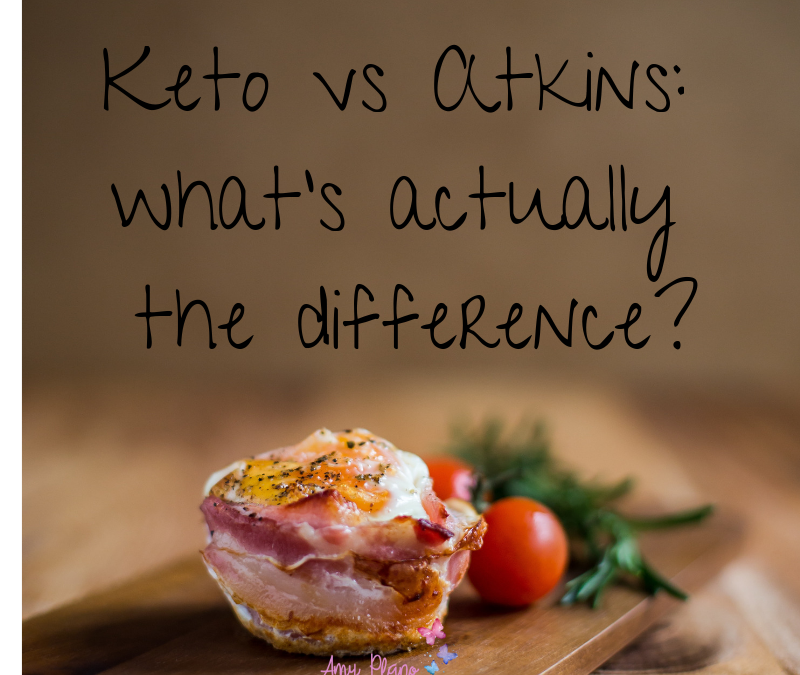
by Amy Plano | Oct 11, 2018 | General Nutrition, low carb, weight loss
Keto vs Atkins: what’s actually the difference?
Keto is such a hot topic these days but is it the same thing as Atkins? Both are low carb, high in fat and share a large majority of the same principles but there are differences. We are going to get to the bottom of this mystery once and for all.
The Great Debate: Carbohydrates Versus Fat
Few things in the world of nutrition are debated as much as “carbohydrates vs fat.” For decades we’ve been told fat is detrimental to our health. Meanwhile low-fat “diet” products, often full of sugar (and crap!) flood just about every aisle in the supermarket. Meanwhile, our population is fatter, sicker and on more medications than ever.

To eat carbs or not to eat carbs. That is the age-old question.
Therefore, it is no surprise that over the last few decades, low carbohydrate diets have made a resurgence. Also thankfully the pendulum has finally swung in a promising direction as it relates to fat intake. Many health professionals now support that a low carb diet is a viable option to treat obesity and other chronic, Western diseases.
Yay finally for legit science!
However, despite advances in research, there still seems to be confusion among the various low carb diets. In fact, one of the common statements I hear in my practice from patients is that they are following a ketogenic diet. But are they really?
More often that not – upon a quick review of their actual eating patterns it becomes apparent their eating style is more consistent with an Atkins diet rather than of a strict ketogenic diet. But does it really matter? Aren’t all low carb diets created equal and illicit the same results? The answer as you will see is not that simple.
Where do I Come in With All of This ?
It is important to note the goal of this blog is purely informational. As a practitioner I have no personal bias as it relates to a low carbohydrate diet. I am neither for or against them. I meet my patients in their health journey ‘where they are’.
With that being said, it is important that my patients are properly educated and not misinformed. Therefore, the intention of this blog is not to debate whether or not a low carb diet is healthy. The intention is to instead to address the differences and similarities of two of the most popular low carbohydrate diets: The Atkins Diet and the Ketogenic diet (aka just Keto). Both are low carb and share a large majority of principles and beneficial outcomes, but a few subtle differences exist too. But what are the main difference between these two diets? And do these differences really matter? Does one promote more long term health benefits? Let’s get some answers.
Similarities Between Atkins & Keto
Before we examine what makes both diets unique it is critical to address the similarities between Keto and Atkins. I believe it these striking similarities that often have someone thinking they are following one type of low carb diet; when in fact they are following a different approach.
Both are Low Carb Diets
At the most basic levels, both Atkins and Keto are low carb diets. However, surprisingly there is no standard definition of what actually constitutes the term “low carb”. Both Keto and Atkins respectively present and adhere to their own definitions. As you will see, it is these very definitions that set Keto and Atkins apart from one another.
Both are Built on the Premise of Ketosis
Definitions aside, it is fair to make the general assumption that a low carb diet restricts carbohydrates, such as those found in sugary foods, pasta, fruit and bread. For both diets, their success centers around lowering the body’s carbohydrate intake in an effort to lower insulin and consequently burn fat as fuel. This process is known as ketosis.
In the absence of carbohydrates the body produces ketones. Ketones are an alternative fuel source for the body to use when blood sugar (glucose) is in short supply. The goal of both Keto and Atkins is to tap into the body’s fat burning potential. Once this switch is flipped, the body changes from burning carbohydrates to fat.

Therefore, by restricting carbohydrates, insulin levels decrease, and fat burning increases dramatically. As we will see in this blog, ketosis plays a pivotal role in each of the diets but in different ways, thus affecting how sustainable each diet is in the long run.
Both Diets Place an Emphasis on Dietary Fat
High fats foods such a meat, eggs, full fat dairy and liberal amounts of fats form the backbone of both Atkins and Keto. However, Keto greatly favors calories come from fat. While on Atkins, fat receives less of an emphasis, with a more dramatic shift towards higher protein lower carb consumption.
Both Diets Provide Similar Health Benefits
Weight loss is the primary end goal of Atkins. While Keto was developed in the 1920’s as a treatment option for epilepsy. But recent research suggests the Keto and Atkins diets may provide health benefits including by not limited to weight loss, optimized blood sugar, improved insulin sensitivity, even reduced risks of various cancers and some neurodegenerative diseases (1, 2).
The Keto Diet
Keto by definition is a high fat, moderate protein, very low carbohydrate diet. The dietary approach is linear from start to “finish”. There is no maintenance plan once you reach your goal. Instead, you sustain the same fixed eating patterns indefinitely.
The Specifics of a Ketogenic Diet
♥ 5 – 10% of energy from carbs
♥ 20 – 30% of energy from proteins
♥ 65 – 80% of energy from fats
The primary goal of eating in tune with these specific percentages is to get the body in ketosis. By following this high fat, moderate protein, low carb diet the individual is able to significantly lower their insulin levels. This radical shift in fuels prompts the body from burning from glucose to creating and using ketones. In turn, facilitating fat burning.

Keto is a high fat, moderate protein,low carb diet.
Let’s be clear about something. Keto is a high fat diet. Not a high protein diet. So you don’t need/want huge amounts of protein. Protein in excess of what your body uses/needs can be converted to glucose, making it more challenging to get in (and stay!) in ketosis. Most people who think they are following Keto often fail to recognize this piece. They get confused with Atkins where protein intake is unregulated and encouraged. They think the same applies for Keto. Well, it does not. On Keto, protein intake needs to be determined and adhered to in order to maximize results.
Long Term Compliance on Keto
When following a true Keto diet, long term compliance with these specific guidelines is critical. If the guidelines are violated, the benefits of ketosis will not be actualized and the individual may actually end up gaining weight.
Therefore, in embarking on Keto the individual must make (and sustain!) significant, permanent, lifestyle changes. No compromising. No backing away. Just a full lifestyle adjustment regarding how you view food and nutrition. No biggie, right ?
Why You Need to Know your Baseline Calorie Needs on Keto
I know counting calories is often noted as not necessary on Keto. However, I am going to disagree here. Think about it. Keto relies on very specific percentages based on total calories consumed. While I agree due metabolic adaptations in relation to hormone regulation you can likely consume a higher level of calories – you still need a starting point for calories. If you do not establish a baseline level of calories, it is impossible to determine the actual percentages of fat, protein and carbohydrates you need to consume. Therefore, you need a starting point for calories to base your percentages off of. Makes sense, right?
The Atkins Diet
Now let’s transition to the Atkins diet and what makes it is this approach unique.
The Specifics of the Atkins Diet
The are four phases in the Atkins diet: Induction, Balancing, Fine-Tuning and Maintenance. The first phase is the most restrictive and vaguely resembles the overall platforms of a ketogenic diet with one major caveat; there is no restriction on protein just carbohydrates. As time progresses and the individual gets closer to their goal weight complex carbohydrate intake increases and the diet becomes less carbohydrate restrictive.
The 4 Phases of Atkins
Induction: Carbohydrates are restricted to no more than 20 grams per day. Emphasis is placed on high fat and high protein foods, with the source of carbohydrates coming from dark, leafy greens.
Balancing: Nuts are incorporated, low carbohydrate vegetables and small amounts of fruit.
Fine-tuning: As someone approaches their goal weight, they begin to add more carbohydrates slowing down weight loss.
Maintenance: High fiber carbohydrates are significantly increased and based on an individual’s level of “tolerance” more or less or added.
The Basics of Atkins
Fat: No defined amount although liberal consumption of high fat foods are encouraged
Protein: Also no defined amount although liberal consumption of high protein foods are encouraged
Carbohydrates: < 20 net grams of carbohydrates per day during Induction phase with increasing amount through the 4 phases
There are no restrictions on fat consumption. More importantly, there is no restriction on protein. You are encouraged to eat as much protein and fat as long as you keep your carbohydrates where they need to be in each respective phase. You don’t need to ‘hit’ specific percentages for your macronutrients. Additionally, you can eat as many calories as you like. Therefore, depending upon your personal eating style this can become a high calorie, high fat, high protein, low carbohydrate diet.
How Keto and Atkins are Different
So we have addressed both the similarities and the respective differences of Keto and Atkins. Now let’s talk about how they compare. Here is a summary of the keys points.

Differing Factor
|
Atkins
|
Keto
|
Carbohydrate Levels
|
Changes from phase to phase, starting with drastic reductions followed by gradual reintroduction.
|
Relatively Fixed level: Approximately 5-10% of total calories.
|
Carbohydrate Monitoring Method
|
Net carbohydrates
|
Total carbohydrates
|
Protein Intake
|
No limit
|
Often based pm approximately 1-1.5 grams of protein for each kg of bodyweight.
|
Fat Intake
|
No set amount – high fat foods encouraged
|
High fat intake. As much as 65 – 85% total calories.
|
Progression
|
4 phase process where carbs are slashed then gradually reintroduced.
|
Once nutritional ketosis is achieved optimal carb, fat and protein levels remain unchanged.
|
Ketone Production
|
Ketosis highest during phase 1. After that ketosis is decreased as carbs are slowly reintroduced.
|
Optimal production levels maintained throughout course of diet.
|
Time When Individual Achieves Ketosis
|
With ketosis the Atkins diet looks to achieve it in phase 1.
|
Depends on the individual.
|
Distribution of Macronutrients
Perhaps the most significant difference between Keto and Atkins is how the macronutrients are specifically distributed. Macronutrients (aka ‘Macros’) are the amount of carbohydrates, fat and protein someone should consume based on their specific needs. Keto as you have seen is highly specific with finite macronutrient ratios. While Atkins promotes a level of food quality (high fat, high protein, low carb) but makes no mention of actual quantity.
Carbohydrates
There is no denying the fact both diets are low in carbohydrates. However, long term Keto promotes a consistent lower carbohydrate diet. Generally speaking, most people on Keto keep their carbs below 30 – 50 grams for.ever. Yes, as already noted, there are no phases or progression of carbohydrates for Keto. Just one steadfast, unwavering level of uniform carbohydrate intake.
In the Induction phase, carbs on Atkins are set at 20 grams or under. However, as the individual progresses through the various phases additional carbohydrates are added. While these additional carbohydrates are not ‘junk’ carbs – the body still recognizes them with a similar blood sugar response. Additional carbohydrates promote an increase in blood sugar. This rise in blood sugar drives up insulin. Ultimately, knocking the individual out of ketosis.
Which raises the question: “Is Atkins a ketogenic diet?” The answer would be: “No.”
Atkins unfortunately diet does not turn you into a fat burner for the long haul. This is simply because as you progress you are allowed to eat an upward of 100 grams of carbs per day. This amount (for many) is sufficient for your body to keep burning sugar for fuel – not fat. Keto, on the other hand, requires sticking to 30 – 50 grams of carbs per day increasing the likelihood of long term ketosis.
Are All Carbs Created Equal?
One area of carb counting that can get a little confusing is the whole “net” carbohydrate situation. Atkins utilizes a net approach to counting carbohydrates. While Keto counts total carbohydrates. Don’t worry, though — it’s not nearly as confusing as it sounds.
Net carbohydrates are what you’re left with after subtracting the grams of fiber per serving from the total carbohydrate amount per serving. In this approach, you can also subtract sugar alcohols as well such as xylitol, sorbitol and erythritol.
For example, if an item has 30 grams of carbohydrates and it contains 10 grams of fiber, then the amount of net carbs the item contains is 20 grams.
According the creators of Atkins, the method to the madness is the net carb amount reflects the grams of carbohydrate that significantly impact blood sugar level. This follows the assumption there is little to no impact of both fiber and sugar alcohols on blood sugar. Therefore, when following Atkins these are are the only carbs you need to count. Foods that are low in net carbs such as nutrient-dense vegetables and low glycemic fruits such as berries don’t cause a significant impact on blood sugar and therefore are less likely to interfere with weight loss.
Matter of perspective
When it comes to counting carbs on Keto it really depends who you ask! Some true devotees of Keto will count total carbohydrates independent of fiber. While others followers of Keto aim for 20-25 grams of net carbs OR ~ 50 grams of total carbs. Either way you slice it the goal is to keep carbohydrates low enough to decrease insulin levels and facilitate fat burning.
Fat
The Dietary Guidelines set forth by the U.S. government promote a diet containing 20-35 % of total calories coming from fat. Therefore, comparatively Keto is considered a very high fat diet with 65 – 85 % total calories coming from fat. Atkins is also higher in fat than your typical recommended diet. But not as high as Keto. The emphasis is slightly different with Atkins. The focus to is instead on removing carbs while equally boosting protein and fats.
Also unlike Keto, there is no set amount of daily fat you are required to consume on Atkins. The main emphasis on Atkins is to keep carbohydrates below the set level for each phase. While high fat foods are encouraged, fat intake can vary from person to person.
Protein
On Keto an ‘adequate’ or ‘moderate’ amount of protein is encouraged. While on Atkins protein intake (like fat intake) has no set amount. Therefore, it is possible for Atkins to become a low carbohydrate, high protein, high fat diet. Why does this matter?
Certain factors like eating too much protein can (for some individuals) get in the way of ketosis and increase the need for gluconeogenesis. Gluconeogenesis is just a fancy term for making glucose from non-glucose sources like protein and fat. It’s a process when your body converts excess protein or dietary fat you eat into blood sugar for energy. Some researchers believe the protein sources commonly consumed on a low carb diet have the propensity to raise insulin levels. In response to an increase in insulin levels, ketogenesis is down regulated.
This is why eating ‘too’ much protein can impair some individual’s ability to get in and stay in ketosis. But, this does not mean you should restrict your protein consumption either! But what it does mean is someone following Keto NEEDs to determine their adequate level of protein intake. A good general rule of thumb is to aim for 1.0 – 1.5 grams of protein per kg body (3). To convert your weight into kg simply multiply your weight in pounds by 0.45.

By taking the time to determine what a moderate level of protein intake looks like, the individual on Keto can both optimize their fat burning potential and prevent lean muscle breakdown. However, your protein needs are dependent on your activity level, weight, height, gender, body composition, stress and inflammation levels in your body, etc. So keep in mind this calculation is a very basic way to determine adequate protein intake. If you are a competitive athlete you will likely need to adjust this value.
Comparative Summary
In summary, it is fair to say when it comes to Keto and Atkins, Keto is much more specific with very finite guidelines. While Atkins can be seen as more ‘loosey-goosey.’ In order to achieve the benefits of Keto you have to be very precise. While the Atkins diet is more flexible. Hence Atkins could be seen as less intimidating prompting more people to try their hand at this approach. With that being said, some people thrive on a rule-based approach. They need profound structure because otherwise they’re going try to break/bend the rules at any occasion they see fit. So, it really comes down to the individual.
Which One is Better?
In all honesty, despite their similarities and differences I really don’t know which one is ‘better’ per say. My personal stance is “Different strokes, for different folks.” My goal is to meet my patients where they are and guide them based on the scientific evidence that exists. I personally think an argument could be made for pretty much any dietary approach out there. SO I guess it really lies in someone’s goals, level of dedication, persona and long term personal outlook on health and wellness.
Some people just can’t wrap their arms around a low carb, high fat diet. It is SO foreign to them. While others, embrace this dietary approach with unwavering optimism. I think the big thing with either diet is knowing the score. Based on my knowledge, the intention of Keto is more of a true lifestyle change. While Atkins seems for most to be a fairly short-term guide to weight loss. So if you are as they say, ”In it to win it,” I would recommend you go ‘all in’ with Keto and do it right.

But truth be told – I have never.ever.ever. met anyone to be consistent long-term with either approach. Inevitably for most — pizza happens 🙂 But maybe that is just the circle of patients, friends and family members I run with?
Well, I guess that is not true. Research supports long term compliance (> 12 months) on a very low carb diet in the general population is fairly low (4, 5). Surprised? I didn’t think so. Does that mean this approach is wrong? No. It just means a very low carbohydrate diet is very hard to sustain.
My Personal Experience is All I Have GOT!
Also I can only speak from my personal clinical experience. But once people go back to eating normal- carbs and all – they seem to gain weight back with interest. That is because each gram of carbohydrates pulls into 3-6 grams of water into the body. When you significantly decrease your intake of the carbohydrates – you simply take on less water. Increasing protein intake can also have a diuretic effect on the body. Therefore, it is not a surprising when a person goes off a low carb diet – they often experience shifts in fluids and therefore fluctuations in weight.
So I guess the next question becomes can we get the benefits of a ketogenic diet without being going gangbusters with Keto or Atkins? The answer is YES. If there is any uniform message here the key to success is managing insulin. And ‘Hello!” there are numerous ways to that! Last we I talked your ear off about Intermittent Fasting. But you don’t have to go Keto or even engage in Intermittent Fasting if that is not your bag. In fact, the number one insulin sensitizer is exercise!!! Plus, exercise has a host of other extremely beneficial side effects beyond just lowering and managing insulin. So why not start with the lowest hanging fruit? No need to complicate matters anymore than they already are 🙂
One more thing
And one more thing. What gets measured gets managed. Really want to knock it out of the ball park? Start tracking every morsel that goes in your mouth. And I do mean everything! Because before you even begin thinking about changing your dietary approach you need to understand the current status of your diet. The only way to do that is track what you eat and review the data. Plain and simple.
Need help getting started? Why not enlist the help of one of fabulous Plano Program’s Registered Dietitians? They can not only help you determine the most effective food tracking platform – but they can provide an overall assessment of both the quality and quantity (Hello macros!) of your diet. The best part? They are likely covered by your health insurance. So why not take advantage of the awesome opportunity to have someone help you determine what to eat? Make an appointment now by clicking here.
Phew. That was a mouthful! I hope you found the information helpful. If anything I hope it empowers you to select the most appropriate dietary approach when it comes to low carbohydrate diets.
Hugs & High Fives,
Amy
P.S. What have been your personal experiences with low carb diets? Do you find one type of low carb diet was easier to sustain than the other? After reading this were you following one type of low carb diet – when you really were following another type? Please share your experience in the comments below.
References
- Halton TL, Willett WC, Liu S, et al. “Low-carbohydrate-diet score and the risk of coronary heart disease in women.” N Engl J Med. 2006;355:1991-2002.
- Halton TL, Liu S, Manson JE, Hu FB. “Low-carbohydrate-diet score and risk of type 2 diabetes in women. “ Am J Clin Nutr. 2008;87:339-46.
- American College of Sports Medicine position stand. “Nutrition and athletic performance. American Dietetic Association., Dietitians of Canada.,” American College of Sports Medicine., Rodriguez NR, Di Marco NM, Langley S.Med Sci Sports Exerc. 2009 Mar; 41(3):709-31.
- Hu T., Yao L., Reynolds K., Niu T., Li S., Whelton P. K., He J., Steffen L. M., and Bazzano L. A. (2016) Adherence to low‐carbohydrate and low‐fat diets in relation to weight loss and cardiovascular risk factors. Obesity Science & Practice, 2: 24–31.
- Grant D Brinkworth, Manny Noakes, Jonathan D Buckley, Jennifer B Keogh, Peter M Clifton; Long-term effects of a very-low-carbohydrate weight loss diet compared with an isocaloric low-fat diet after 12 mo, The American Journal of Clinical Nutrition, Volume 90, Issue 1, 1 July 2009, 23–32.
by Amy Plano | Jul 9, 2018 | metabolism, weight loss
What is metabolic testing ?
The million dollar question on everyone’s mind, “what is metabolic testing ?” Many people have heard the term but have no clue what to expect from metabolic testing. The goal of this blog is to clarify this information and tell you exactly how to prepare for the testing to ensure the best results.
Trust me – there is absolutely nothing remotely scary about having your metabolism tested. In fact – I can almost guarantee you will be skipping out of my office with the new information in hand like a kid on Christmas day. Now let’s chat about how to prepare for metabolism testing.
First things first, metabolism testing does not hurt. I promise! We don’t draw blood. Also there is NO physical exertion involved. In the past, I have had patients show up in their workout gear thinking they were going to participate in something that might resemble a stress test. This is certainly not the case. So no worries you can leave your running shoes at home!
The device we use to measure your metabolism is called the Bodygem. This device measures your metabolism by capturing the air you breath.
Sounds pretty easy? Well it is.

Three things to do to prepare for the metabolism test:
Come fasted with no caffeine in your system for 4 hours prior to your test. You can drink plenty of water though!
Please don’t exercise within 4 hours of the test.
Arrive not having smoked a cigarette within 4 hours of the test.
Caffeine, exercise, and nicotine all can slightly increase your metabolic rate. Therefore, we do our best to minimize these variables so we can deliver you the most accurate results.
Curious about what other factors might influence your metabolism? Check out last week’s informative blog “RMR Testing 101” on this exact topic.
The actual test
Once you arrive we will get you all set up! You will sit peacefully in a chair with a small mouth tube in your mouth and a cute little nose clip on. The goal of the nose clip is to create a vacuum seal so no air escapes.
I promise, I will not post any Facebook pictures with your sexy nose clip on:)
By measuring both the amount of oxygen you exhale and the amount of carbon dioxide you expire we are able to calculate your metabolism. It’s that simple. This method is called indirect calorimetry and is one of the most accurate ways to measure metabolism. The test itself takes about 10 minutes.
Like I mentioned, the test does not hurt. However, some people find it uncomfortable as you need to breathe through your mouth for the duration of the test.

Once the test is complete we need to talk goals. Generally speaking my patients generally have three types of goals – they want to lose weight, maintain their weight or gain weight. Therefore, the next step will be tol weigh you and test your body fat. That way we have a starting point for you to gauge your progress.
Next, we will gather your demographics. Factors such as your age, sex, occupation, type and frequency of exercise, and even your sleep patterns are all important variables in determining an appropriate calorie level for your goals. All this information is then entered into a software program which then generates several important numbers.
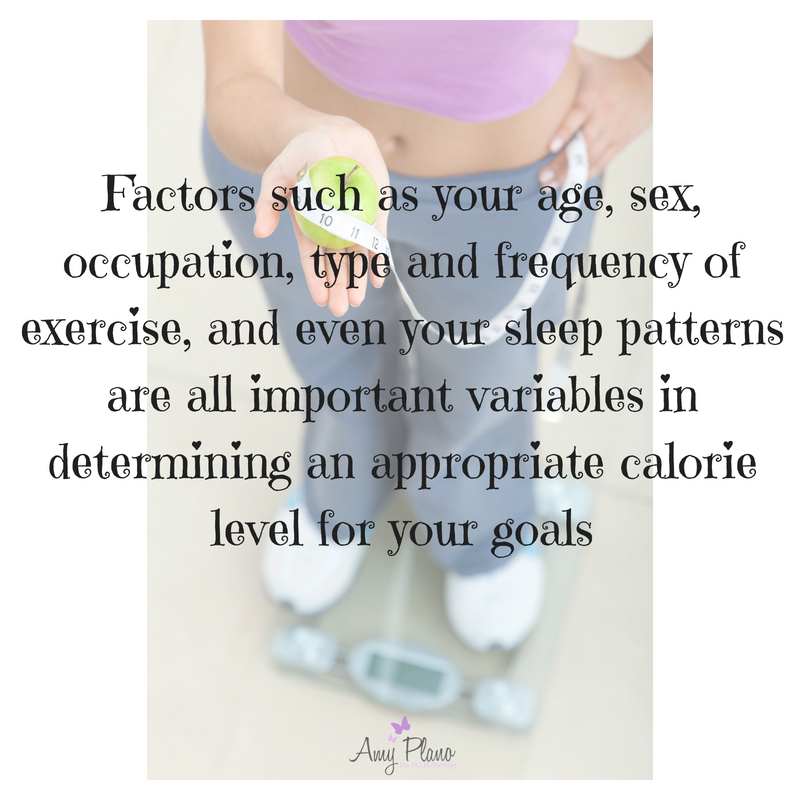
The Bodygem tells us the following:
Exactly how many calories you need to take in on the days you workout
Exactly how many calories you need to take in on your non-training (rest) days.
How you compare to other individuals with the same demographics
Your BMI
Once we have this important information we can then specifically tell you where your calories need to be to accomplish your specific goals. We can also make suggestions on your macros if that is something you are interested in. If you need help setting up these numbers in a tracking program like MyfitnessPal we are happy to help guide you as well.
If you need additional services like a customized meal planner with specific meal suggestions or guidance on how to incorporate carbohydrate cycling or intermittent fasting these can all be provided at an additional fee.
The entire metabolic test plus the consult should take no longer than 45 minutes. You will leave with a personalized print out with your results and a solid knowledge of what is metabolic testing really entails. No guesswork involved!

On next week’s blog we will dive deeper into the results. We will interpret the results of three actual Bodygem results and discuss how to apply the information. So now when someone asks you the question, ” what is metabolic testing ” you will be able to give them a A+ answer 🙂
P.S. The icing on the cake is if you purchase the metabolism test during the month of July you will be entitled to a 40 % discount for my birthday. Just use coupon code thisis40 when you schedule your metabolism test on www.amyplano.com to receive the discount. However, act fast as this discount will only be around until July 31, 2018.
Have questions on metabolic testing? Please don’t be shy! Ask in the comments section below.
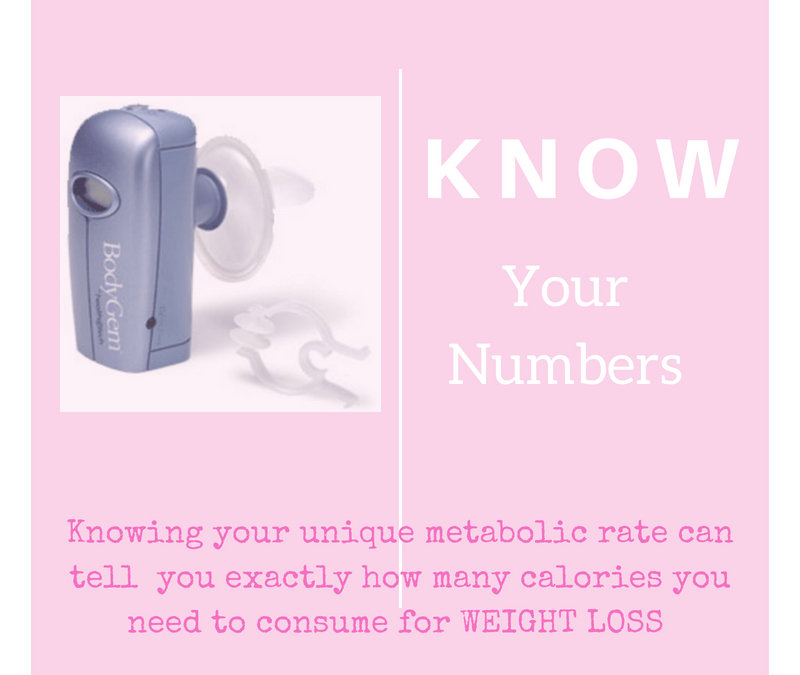
by Amy Plano | Jul 2, 2018 | metabolism, weight loss
Are you unable to lose weight in spite of vigorous exercise and a disciplined training schedule? Are you looking to maximize your performance yet feel like despite all your efforts you are failing miserably? Have you hit a plateau in your weight loss? Would you like to take the “guesswork” out of determining your calories to achieve your goals? Well if you answered “heck yes” to any of the above questions then you are likely the perfect candidate for RMR testing.
What is Metabolism
First things first, before we talk about RMR testing and why it is so friggin’ important we need to define metabolism. Did you know that even when you’re at rest, your body needs energy for its “silent” functions? These include breathing, circulating blood, adjusting hormone levels, and growing and repairing cells. The number of calories your body uses to carry out these basic functions is known as your basal metabolic rate (BMR) or more often referred to outside of a clinical setting as resting metabolic rate (RMR).
There are many factors which determine our metabolism. Some include:
Your body size and composition.
People who are larger or have more muscle burn more calories. Even at rest these folks tend to have higher RMR’s.
Your sex.
Men usually have less body fat and more muscle than do women of the same age and weight. This means men burn more calories at rest (Boo!). But don’t worry, I will be sharing some tips for how us chicks can optimize our metabolisms.
Your age.
As we get older (sigh), the amount of muscle we carry tends to decrease. Fat accounts for more of our weight, slowing down calorie burning. [Tip: If you consistently work out with weights you can help off-set some of this loss 🙂 ]
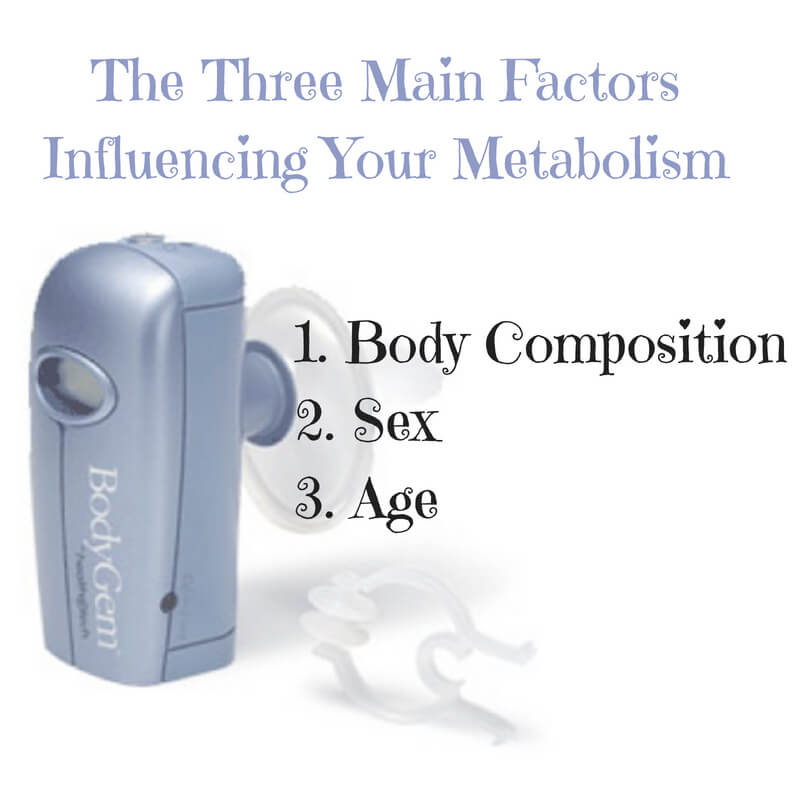
Two other important factors that determine how many calories your body burns each day:
Food processing (we call this thermogenesis!)
Did you know that digesting, absorbing, transporting and storing the food you consume also expends calories? Score! About 10 percent of the calories you burn each day come from the digestion and absorption of food and nutrients.
Physical activity
Physical activity and exercise accounts for the rest of the calories your body burns up each day. It comes as no surprise that physical activity is by far the most variable of all the factors.

The changes in overall body mass (increase or decrease) ultimately comes down to long-term energy balance which is represented by energy in (via food) and energy out (via metabolic rate). Total energy expenditure is determined by many factors including: body composition, sex, age, thermogenesis and physical activity. Having ‘good’ genetics certainly doesn’t hurt either! So now that you are a master of ‘all terms metabolism’ let’s get down to business.
Here are my top three reasons for why getting your RMR tested is SO important to achieving your body composition and training related goals
1. Takes the guesswork out.
By having your metabolism tested by a professional you never need to ask yourself the annoying questions, “How much or little should I be eating ?!?”
How many times have you entered your height and weight into an online metabolism calculator only to get some crazy number which you have no idea how to interpret?
I cannot tell you how many times patients come into my office following a calorie level that is completely wrong for the goals they are trying to accomplish. This frustrates the heck out of me. It’s not that they are unsuccessful for lack of trying. It’s simply because they have been provided with the wrong information.
By testing your RMR you will now know the exact number of calories your body needs to accomplish your dietary and fitness related goals. There is no more guessing or even second guessing where your calories need to be! Through the use cutting edge technology we can help you determine the exact amount of calories you need to reach your goals. Headache solved!
2. Gives you an accurate baseline.
If you don’t know your baseline calorie needs how do you know if what you are doing is ‘working’?
You have got big goals which I love and admire. However, how can you accomplish your long-term goals if you don’t know where your baseline needs currently are? Testing your metabolism before you make significant changes to your exercise and/or training routine can provide you with a solid foundation in which to make adaptations. Therefore, as things like your body composition, weight and/or performance markers change over time you can adjust your calories relative to your new goals.
Independent of what our specific goals are we all need a caloric starting point. If we don’t have a baseline and we start making changes to our diet how can we tell what specific calorie level is working? Simply put – we can’t.
Therefore, by testing your RMR before making any significant dietary and/ or training changes you are armed with an accurate, reliable calorie level to base your goals on.
3. It helps you when you are stumped.
Knowing your RMR gives you clarity in those moments when no matter how hard you try – you just cannot seem to tackle your dietary and/or fitness goals.
Knowing your your RMR can be critical when you are stumped. As mentioned previously many people base their goals around a calorie level that is not in tune with their goals. Along with the headache this creates can come a massive amount of frustration. Unfortunately, if you have been there you know exactly what I am talking about 🙁
Trying to gain lean muscle mass but struggling like crazy? It could be that your calories are too low. We all know that in order to build anything we need ‘extra’ resources, right? That extra might be money, resources or time. Same goes for putting on muscle. In this case, the extra needs to be in the form of calories. Therefore, for someone aiming to put on muscle they need to FIRST make sure they are taking in enough calories to do.
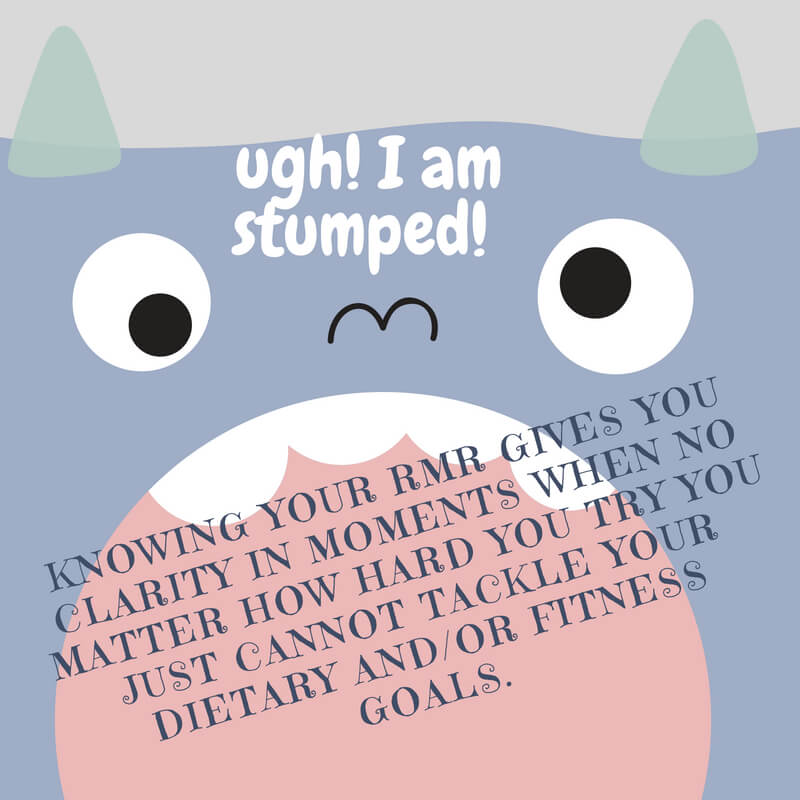
On the flip side, do you feel like you are at a weight loss plateau? Are you meticulously counting calories, carbs, protein and everything under the sun and still not losing weight? Is MyFitnessPal definitely not your pal? For most people the simple answer is their calories are not in tune with their weight loss goals. It could be that their calories are too low. Or it could mean that their calories are too high. How the heck will they know unless they actually test their metabolism?
Knowing your unique RMR for the different ‘seasons’ can help optimize your nutrition during both your off-season and peak training periods. During training, you need to make sure you are taking in enough calories to support not only your training but your ideal body composition for your sport. It’s no surprise when an athlete is not taking in enough calories how quickly they feel the side effects. Unintentional weight can lead to fatigue, burnout and injury. All of these can be factors can be minimized if not avoided entirely.
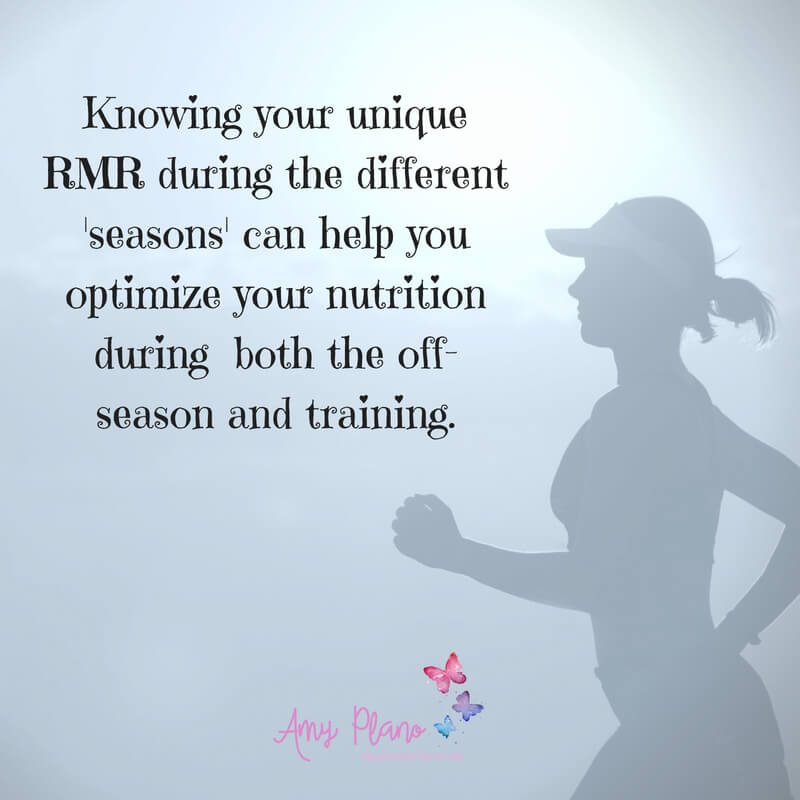
Leave nothing on the table when it comes to your training. Mama did not raise no fool 🙂
Case in point – I rest my case. Plain and simple – anyone with a performance or body composition related goal should have their metabolism tested. And truth be told I don’t know a whole lot of people who don’t share these goals (especially the later!) By testing your RMR you will no longer be ‘spinning your wheels.’ The precise tools you need to determine the exact calorie level to fit your specific goals is attainable. And just like Jim Rohn’s stated, “When you know what you want and you want it bad enough, you’ll find a way to get it.”
P.S. Did you know we are running a 40 % discount on RMR testing for the month of July? Use the coupon code thisis40 when scheduling your metabolism testing under the ‘appointments’ tab on our website www.amyplano.com
P.P.S. What are you waiting for? This fantastic deal will not be around forever. Cut through all the confusion and get the numbers you need.
P.P.P.S. Does any of this mumbo-jumbo about RMR testing resonate with YOU? If so, in what way? Share your thoughts in the comments below. We ♥ to hear your thoughts. Don’t be shy – we don’t bite.
by Amy Plano | Jun 25, 2018 | metabolism, weight loss
So it is true … this girl right here turns 40 years old on Friday, June 29th. And what better way to celebrate my 40th then with YOU my loyal readers. So how would you like to receive a present from me? How does a 40 % discount on a metabolism test to celebrate this fabulous occasion sound? I don’t know about you but it sounds pretty dang awesome to me.

Heading into the next decade can be a drag. So rather than have a pity party for myself I decided to give you a pretty sweet present to mark this milestone birthday – 40 % off metabolism testing for the whole month of July. Whoot! Whoot!
For the whole month of July redeem coupon code thisis40 when scheduling your metabolism test to receive 40 % off each individual test. The normal rate for a metabolism test is $150.00. Therefore, by redeeming the code thisis40 you save yourself 60 bucks! If that is not pretty sweet – then I don’t know what is.
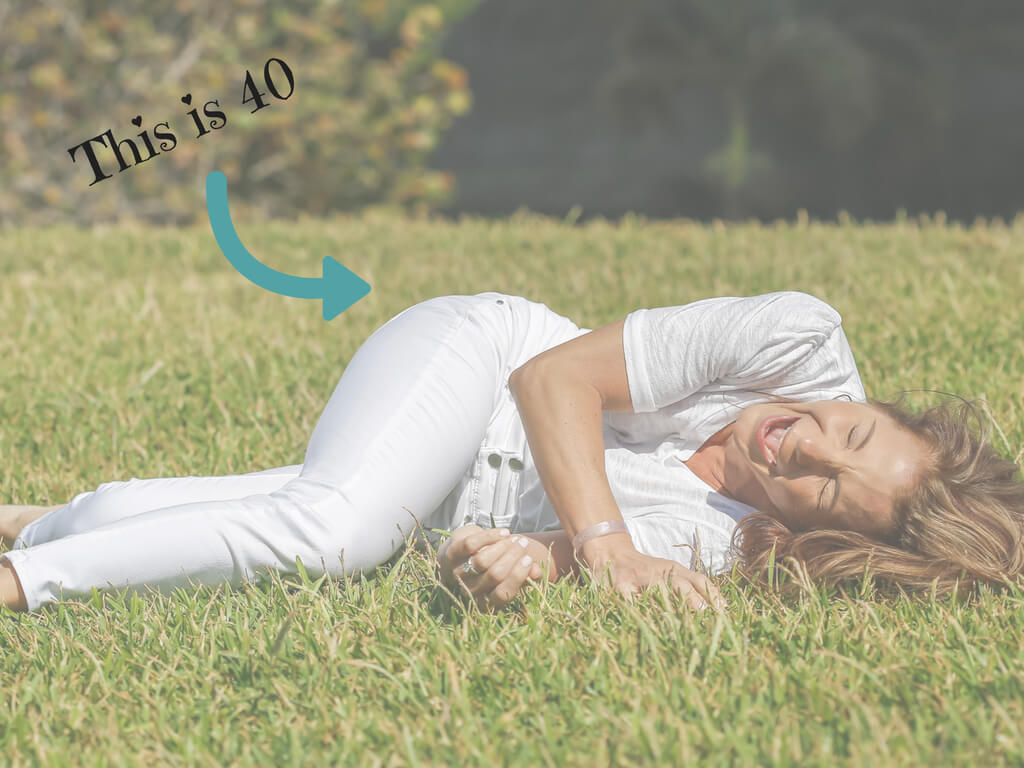
Important note: In order to receive the most accurate reading on the metabolic test you should be fasted (no food), with no exercise or caffeine within 4 hours of your test time. You can drink plenty of water – just nothing with caffeine or calories.

Below are the steps to redeem your discounted metabolism test:
- Click HERE and you will be re-directed to the scheduling section of this website.
- Click the link for “Metabolism Testing” under appointments.
- When the prompts ask you “with” who you would like to schedule you can choose either myself or my fabulous RD Audrey. The discount applies to us BOTH.
- Select the time slot you would like to come in for your metabolism test.
- Next put in your name, phone number and email address.
- Within the information section where it says “Redeem Coupon” put in the discount code thisis40
- Follow the prompts for payment
- Once you have provided payment you will receive an email confirmation with the date and time of your visit.
- Arrive fasted, with no caffeine or exercise within 4 hours of your test.
Our office is located at 500 Boston Post Road, Orange, CT 06477. We are in the same plaza as Hawley Lane Shoes. When you pull into the plaza look for signs for The Plano Program.
Over the next month I will be releasing more information about why having your metabolism tested is SO friggin’ important – so stay tuned for blog updates.
Please fee free to share this birthday gift with anyone who you think might benefit – which I think is pretty much anyone with nutrition related goals. After all who does not want to know their metabolism? Said no one ever 🙂
Have you ever had your metabolism tested? Did you find it helpful in reaching your nutrition related goals. Please tell us your experience in the comments below.
by Amy Plano | Jun 14, 2018 | healthy eating, holiday healthy eating, weight loss, weight loss and alcohol
Between the crazy highs and unseasonably low temperatures this past week in CT (and freakish Tornadoes) it is hard to believe Memorial Day is just around the corner. However, you know it, people will be firing up their grills and breaking out the dogs and burgers. Rather than throwing caution to the wind and deciding you’ll jump on the latest detox diet Tuesday, why not stay ahead of the game? There are plenty of ways to keep your long weekend healthy and tasty!
Sip Responsibly this Memorial Day
Yes – I know this a no brainer! But seriously Memorial Day seems like the official kick off for summer drinking. As if people need a reason to drink, right? However, if you are going to imbibe then why not choose to do so responsibly.
Numero uno – avoid the carb bombs. Margaritas, frozen drinks and unfortunately the likes of craft beers tend to be very calorie and carbohydrate heavy. While Craft beers range in calories most clock in at about 200 – 250 calories per 12-ounce bottle. Thinking about knocking back 2-3? You are looking at an upward of 600 calories in alcohol alone.
Side note – back in the day when I used to bartend I would start my shift by making 5 gallon tubs of margaritas. In each batch I would put two full pounds of quick dissolve sugar! Yes – holy moley is right! Sugar rush for sure.
Instead, opt for clear spirits like vodka, gin, and rum mixed with a no/low-calorie mixer. For example, a Titos and Club Soda will only set you back about 95 calories. Plus did you know flavored vodkas (think Stoli Raspberry, Absolut Melon, Pinnacle Whipped Cream) have the same amount of calories as plain vodka? So you can even get fancy and mix a flavored vodka with a flavored club soda squeeze some lime on top and there you have your new favorite skinny summer cocktail.
Or if hard liquor is not your style – choose a light beer and you are only looking at about 100 calories as well. A glass of white or red wine is about 150 calories. Want to cut those those calories in half? Make yourself a wine spritzer! Fill a wine glass with crushed ice. Then pour 2-3 ounces of wine and 3-6 ounces of your favorite seltzer into a wine glass. Top with sliced fruit. Whallah!
Are the above options not really your jam? How about a low-calorie mojito? Coconut Water and Champagne Punch anyone? These low calorie cocktail from Proof are perfect for those watching their waistline. And let’s be honest – who IS NOT watching those waistlines!

Who says cocktails have to be unhealthy? Not this RD.
Photo by: Monika Grabkowska
Want more information about the calorie counts of your favorite beverages? Check out one of my recent posts on this very topic!
Pump up the Veggies
Often at picnics there are more veggies available than one might think. Sometimes you just need to do a little searching. Crudite platters, tossed salads and even the infamous toppings for burgers are all good places to get those veggies in.
Are you trying to watch your carbs? Why not try a lettuce wrap instead of a bun? After all, if 5 Guys offers this option it has to be good, right? You can save yourself 200 calories and 30 grams of carbohydrates by this simple little swap.
Does the green salad look a little weak? Why not grab some of the ‘fixins’ for the burgers (think lettuce, tomato, onions) and ‘doctor’ up the salad (on your own plate, of course!) Or even better yet – offer to bring a kick-ass salad or some sort of veggie based side. Both options often require very little prep aside from assembly. This way you know you will have something to round your plate out aside from Grandma’s tuna mac salad 🙂
Don’t go Hungry
This rule holds fast for any type of celebration. Never. Ever. Ever. Go to an event hungry.
I repeat. Never. Ever. Ever. Go to an event hungry.
Most of my patients head to an event like a Memorial Day picnic with the mentality they are going to save all their calories for the day for one big meal. They plan to white- knuckle it the whole day until they get to the picnic. This backfires HARD pretty much every time. As soon as they see the food they everything short of bury their face in pretty much everything and anything that is out.
Instead plan accordingly. Have a light breakfast or snack prior to the picnic. Scrambled eggs and fruit, greek yogurt with 1-2 tablespoons of granola, an apple with peanut butter or something even as small as nuts or a cheese stick will keep your hunger at bay.
I much rather see you spend more time on the ‘front end’ in preparing than leave the picnic feeling big, bloated and polluted with an underlying sense of guilt. We all know this feeling! But YOU are stronger than this. Don’t allow yourself to be defeated. Instead plan ahead like the champ you are and leave the picnic with your rock-star status intact.
Keep it Lean and and No one will be Mean
Be a lean mean grilling machine at your next BBQ. After all, nobody goes to a BBQ saying, “I cannot wait to eat super sloppy BBQ food.” If you are the grillmaster instead choose lean cuts of protein to throw on the coals. Your guests will thank you!
Think 93 % lean ground beef, flank steak, grilled chicken breast marinated in a little balsamic, rosemary and oil, or even a veggie burger (just watch the sodium on those puppies some brands are crazy high!)
Truth bomb – many people opt for a turkey burger thinking it is the best choice. Best as we know is a relative term. Well, it’s not a horrible choice but is it the best choice? I am not so sure.

Did you know that beef burgers and turkey burgers often contain the SAME amount of calories and fat?
Did you know a turkey burger made from “LEAN” ground turkey has just about the same amount of calories and fat (150 – 170 calories & 7 -10 grams of fat for a 4 oz. patty) as a burger made from ground sirloin (93 % lean ground beef)? Lean ground turkey is generally a mix of light and dark meat. So if you are craving a nice juicy burger but are feeling guilty about eating red meat please don’t!
The only exception from a ground turkey standpoint is when the package states “EXTRA” lean. This type of ground turkey has virtually no fat, is expensive and in my humble opinion does not taste very good. It is certainly not good for burgers on the grill. With virtually no fat the burger will be unfortunately very dry.
Be a Good Friend
From my experience as someone who loves to host parties and tells everyone NOT to bring anything – never believe the host. They lie. I love it when someone brings something. SO be that good friend and come bearing food 🙂 This is your prime opportunity to bring something healthy that everyone (including yourself) will likely enjoy.
I can’t tell you how many times my patients say, “There was nothing healthy to eat so I had to eat crap.” Really? Come on my friend. No need to be so lazy! Get off your little butt and avoid all those excuses.
Remember it does not have to be something fancy, complicated or expensive. Heck stop at Costco and grab a veggie platter for $9.99 or a simple fruit bowl (also may I add for only $9.99 at Costco). Even a big old tub of hummus with a bag of baby carrots will likely be appreciated. Pick up a whole watermelon and bring that! After all, who doesn’t like juicy watermelon? The list of healthy options you can bring are seemingly endless.

Be a bestie and don’t forget to bring a healthy dish!
Want to step up your grame? Why not make a killer salad with everything but the kitchen sink in it? That way you can take whatever comes off the grill and and throw it on top of the salad. You will be surprised how many guests will follow suit. Because like I said, even though Memorial Day is typically synonymous with unhealthy foods, it does not have to be. More people than not are working hard to improve their health. Give people a handful of healthy options and they will thank you for it. A little effort goes a long way!
So whether or not it feels that way right now – Memorial Day will soon be here. While I am by no means asking you to be a saint (what fun would that be?) – why not start the summer season on a good foot? You have worked SO hard all winter. Let’s go into summer strong!
How do you anticipate to survive Memorial Day like a champ? What are your tried-and-true tips for a healthy summer holiday weekend? Leave your favorites in the comments below!
























